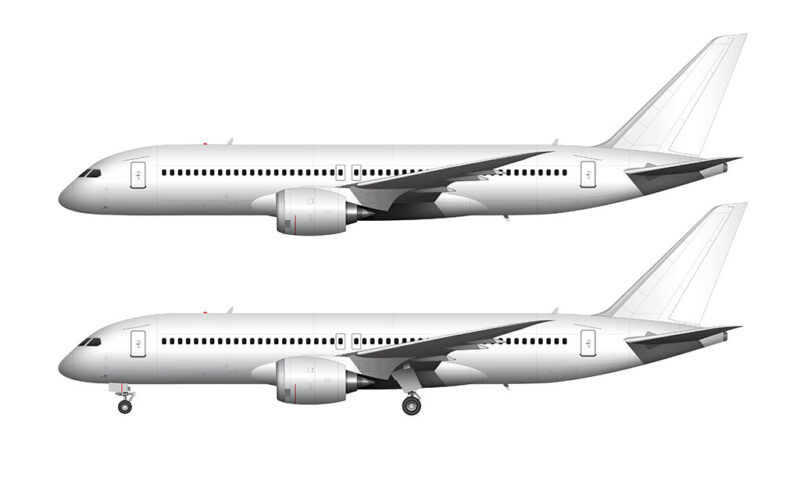Boeing in Early Stages of Developing 737 Max Successor

Boeing is reportedly in the early stages of developing a new single-aisle jet that could eventually replace the 737 Max, according to a Wall Street Journal report citing people familiar with the matter. The discussions mark the first significant steps toward defining Boeing’s long-term narrowbody strategy as it faces growing competition from Airbus and China’s Comac.
Market Pressures Driving Change
The COVID-19 pandemic reshaped airline priorities, accelerating demand for smaller, fuel-efficient jets while pushing larger widebodies out of favor. From 2020 onward, most orders worldwide have centered on single-aisle aircraft, a trend that has carried into 2025. This reality is pushing Boeing to consider whether it should continue with its long-discussed Boeing New Midsize Airplane (NMA) project, sometimes referred to as the 797, or pivot resources into a true successor for its best-selling 737 line.
The 737 has been Boeing’s workhorse since the 1960s, with more than 14,000 delivered, and its latest variant, the Boeing 737 Max, has logged 6,782 orders and 1,965 deliveries. The early 737 Max fallout led to a global grounding, multiple lawsuits, and regulatory probes, leaving Boeing’s credibility battered. While the aircraft was cleared to fly again in late 2020, the 737 Max continues to operate under close oversight, including a Federal Aviation Administration (FAA) production cap of 38 aircraft per month imposed in early 2024 after a panel blowout on an Alaska Airlines jet.
A Future Small Airplane (FSA) in the Works?
Industry analysts suggest Boeing may shelve the NMA and instead move forward with what is being described as the “Future Small Airplane” (FSA). Positioned between 150 and 250 seats, the FSA could leverage advanced technologies from the 787 Dreamliner and 777X programs, including composite wings, more efficient aerodynamics, and next-generation avionics.
Such an aircraft would be designed to go head-to-head with Airbus’s dominant A320neo family, which currently holds a backlog of more than 5,500 aircraft. Boeing’s 737 Max, by comparison, has around 4,800 jets in backlog. Airbus has also stretched its lineup with the A321XLR, capturing a lucrative segment of the middle market once served by Boeing’s retired 757. Meanwhile, China’s Comac C919 is beginning to gain traction in Asia, underscoring the need for Boeing to respond.
See also: Is the Airbus A322 Feasible as the Future of Mid-Market Flying?
Speculative Comparison Table — Boeing FSA vs. Key Rivals
| Aircraft (Speculative/Actual) | Typical Seating | Range (km) | Type | Role |
|---|---|---|---|---|
| Airbus A322 (concept) | 220–250 | ~3,800 nm (7,000 km) | Single-aisle (stretched A321XLR) | Middle-market, thin long-haul routes |
| Airbus A321XLR (in service 2024) | 206–244 | ~4,700 nm (8,700 km) | Single-aisle | Long-range narrowbody; transatlantic |
| Boeing 737-10 Max | ~188–230 | ~3,400 nm (6,300 km) | Single-aisle | High-density short/medium-haul routes |
| Boeing FSA (Future Small Airplane) | ~150-250 | ~3,400-3,900 nm (6,300-7,250 km) | Single-aisle | 737 Max and NMA replacement |
| Boeing 797 NMA | 220-270 | ~4,500-5,000 nm (8,300-9,250 km) | Small Twin-aisle | Small twin-aisle or “hybrid” cross-section; long-haul, thin transoceanic routes |
Engines and Technology Partnerships
According to the WSJ.com, Boeing has already held discussions with Rolls-Royce about developing an engine for the potential new aircraft. While no final decisions have been made, such talks highlight Boeing’s intent to secure propulsion technologies that can deliver double-digit improvements in fuel efficiency. Industry insiders believe that any Boeing launch before the mid-2030s would still rely on traditional turbofan designs, while open-fan and hydrogen concepts mature for later decades.
Challenges and Next Steps
Despite its ambitions, Boeing faces major hurdles. The company must first deliver roughly 6,000 aircraft already in its backlog, secure certification for existing models, and repair its strained relationship with regulators. Additionally, the Alaska Airlines incident in 2024 prompted the U.S. Justice Department to reopen investigations, further complicating Boeing’s recovery.
For now, Boeing remains in the early planning stages. A new narrowbody program would take at least a decade to bring to market, meaning airlines could still be flying 737 Max jets well into the 2030s. But as competition intensifies and fleet renewal needs grow, pressure is mounting for Boeing to define its next move.
Related News: Is the Airbus A322 Feasible as the Future of Mid-Market Flying?, https://airguide.info/?s=boeing+737, https://airguide.info/?s=airbus+A322, https://airguide.info/?s=airbus, https://airguide.info/?s=boeing
Sources: AirGuide Business airguide.info, bing.com, wsj.com, reuters.com
